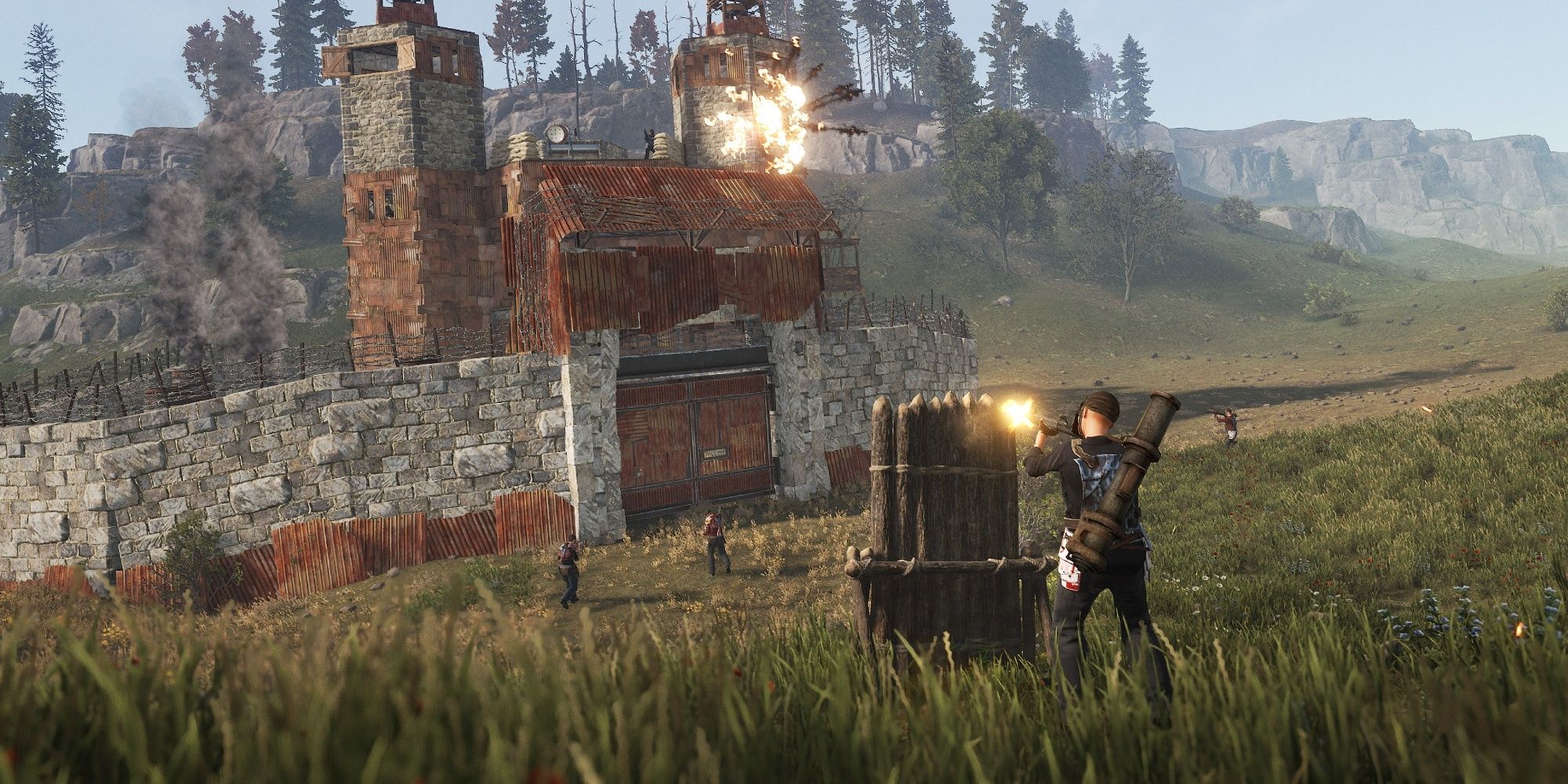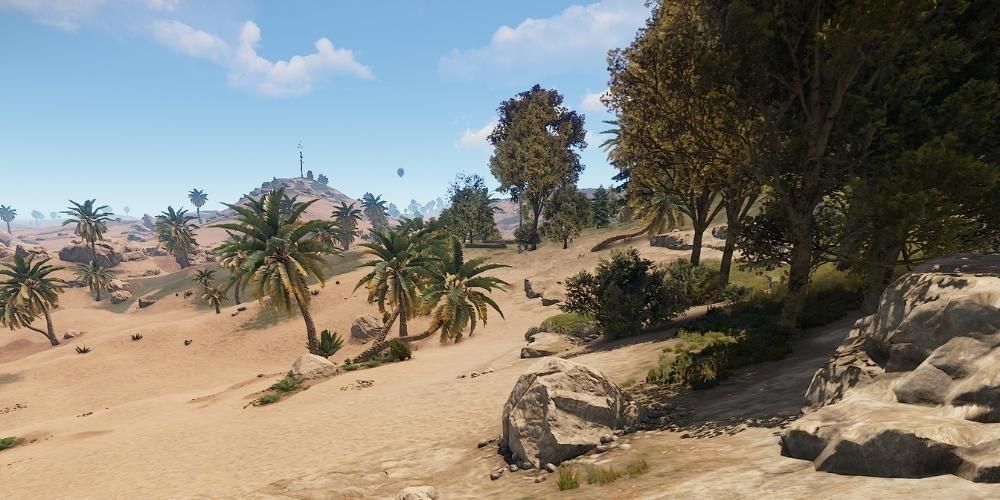Quick Links
When it comes to the survival genre, few games offer a more brutal yet rewarding experience than Facepunch Studios’ Rust. Rust sets players on a journey of base construction, exploration, and (a lot of) PVP combat while incorporating many survival elements including food and thirst meters, diseases, and more.
It has been widely acclaimed as one of the most popular survival games of the present day, but also notoriously difficult to prosper in. Built a base for the first time? Fantastic. Within an hour, a player might well be surveying your newly-established fortress in the hopes of reaping the rewards for themself. To prevent this from happening, there are some key tips for improving a base’s stability and its overall defensiveness.
What Is Stability?
In order to prevent raiders (other players) from simply building above and around players’ bases - much in the same way Fortnite players can ‘ramp’ over enemy builds - a new system was introduced: stability.
Stability comes into play based on the distance of a player’s structures from the ground: 100% stability at ground level, and gradually decreasing in increments based on height. If, for example, a wall is not supported and receives a stability percentage of around 15%, support must be given to that structure. If stability reaches 0%, the structure will crumble and be destroyed. As such, it’s vital to know how to improve stability and create a strong, defensible base. Players can check the stability percentage of a structure by hovering over it with a Hammer equipped.
In order to remedy stability, supporting base structures and parts is vital. This can be confusing for beginners in a game that is already considered to have one of the steepest learning curves, but there are several key points to consider when establishing a base with this mechanic in mind.
Check Your Surroundings
The first step in making a base in Rust is to survey the land around it. Does it have ample resources? Would the base be out in the open? Will raiders see the base before the owner does?
Another point to consider is the attractiveness of the land itself. Some players have reported that building on steep or slanted land can impact the overall stability of their bases. To fix this, find a flat piece of land that has plenty of space to work and build on. Its impact may be minimal on stability, but all factors should be considered when making a base in Rust.
Building out in the open is almost certain death. Instead, search for well-hidden or less prominent places to establish a base while learning how to construct them effectively.
Upgrade To Stone
If players have been fortunate to survive and collect enough resources to build their first base, upgrading from Wooden structures to Stone should be next. This may mean another excursion into the unforgivable landscape, but in order to build taller and more complex bases, Stone is needed from a purely defensive perspective.
When starting out, find small stones on the roads to collect and use to upgrade a Base. Stone can also be purchased at Outposts, or collected from recycling unwanted items in the Recycler.
Support Base Foundations
One of the main factors relating to stability is the integrity of the base itself. If a wall or floor is not supported by other structures around, above, and below it, and it is off the ground, it will likely be unstable. In previous versions of Rust, players could use Pillars to improve base stability; these have since been removed, so some creativity and persistence are key.
If, for example, a base has no internal walls or structures but is 3 grids high, it will not be stable. Adding walls and other constructions in the base will ‘support’ the rest of the structure and improve its overall stability. To add another level of security to the base, use door frames. These will improve a base’s overall stability while providing the player with many opportunities to defend precious loot and equipment through a series of locked doors.
Create A Stability Bunker Or Compressed Base
Rust players have discovered a sweet spot for creating a bunker that maximizes stability and security while minimizing visibility. Some have coined them ‘Stability Bunkers,’ and are comprised of 1-2 grid-high structures which are compressed, yet contain all the storage and defensibility of a large-scale base.
This variety of bases would be excellent for someone who is just beginning their journey into Rust. A solid starter tip would be to start small, experiment, and see what benefits and disadvantages certain base structures and layouts bring. If stability becomes an issue, consider reinforcing the base with additional wall and door frames, or building a ‘shorter’ base.
Experiment And Trial And Error
While some factors relating to stability are tried, tested, and true, there is still some room for discussion if some aspects of the game really do influence stability. For example, it was originally believed that different materials brought different stability influences. However, many have reported that this is not the case.
New builds, methods, theories, and - most importantly - updates are being brought into Rust on a regular basis. Experimentation and developing understanding are key elements of surviving and thriving in its harsh and unforgiving world.
Rust is currently available on PC, macOS, PS4, and Xbox One.





.jpg)

.jpg)

.jpg)
.jpg)